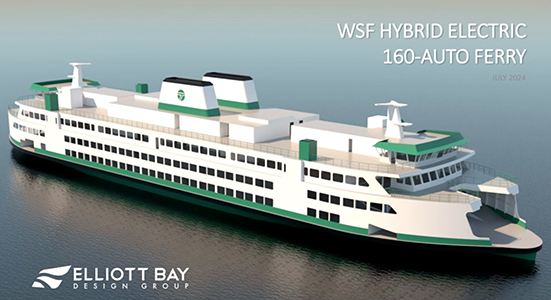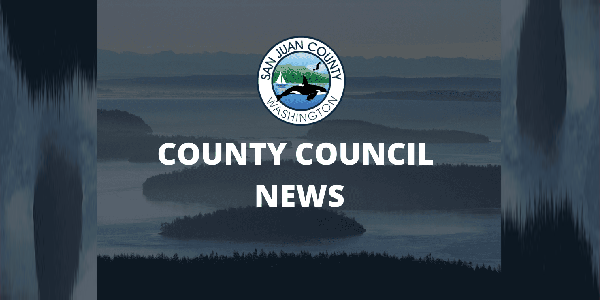Bullwings: Orcas Issues is proud to collaborate with the Stewardship Network of the San Juans to bring its series, “A Short Run to the Sea” to our readers.
We will reproduce daily articles from the series created and published on Stewardship Connections, an electronic publication of the San Juan County Marine Resources Committee and Lead Entity for Salmon Recovery.
There’s Nothing Between Your Boat and the Water
Using environmentally-friendly products and smart practices on deck can help keep our waters
Boating is a way of life for many of us in the islands. We enjoy the water and all the marine life it supports. We are drawn to go out cruising, fishing and crabbing. While we do so, there are specific stewardship practices we can employ to help protect the waters we enjoy.
Thus far in this campaign we have focused on land-based water quality topics. When we shift our attention to boating it is important to recognize that any pollutants entering the system from our boating activities do so directly. On land, there is a possibility of contaminants being filtered through the soil. On the water oil, fuel, grease, contaminated bilge water, grey and black water, antifouling agents, paint and varnish scrapings, and boat cleaning chemicals are all potential sources of pollution. With a clear understanding of best practices and careful attention we can avoid and/or respond responsibly to these inherent sources of water quality contamination. Please consider the following practices.
Fuel your boat slowly and with attention. Because fuel expands as it warms, only fill the tank to 90% of its capacity. Feel for air escaping from the vent: when the tank is nearly full the airflow will increase. Small drips and spills of gasoline, diesel and other petroleum products can add up and cause significant cumulative impacts to our sensitive marine environment.
Engine maintenance is an essential component to water quality conscious boating. Be watchful for leaks in the engine. Regularly check fuel and oil fittings, hydraulic lines and engine seals and gaskets. Be prepared by lining the compartment with oil absorbent pads or drip pans. Keep the bilge area as dry as possible, and never pump engine oil into the bilge. Soak up any bilge oil with oil absorbent pads or pillows, by tying them in place so they won’t interfere with machinery or block the bilge pump intake. If the bilge needs cleaning, put absorbent materials in the bilge to soak up and remove any oil. Then, pump the bilge dry and use a rag to wipe down the bilge area and equipment. In cases of severe bilge oil contamination, bring your boat to a haul-out facility where bilge water treatment is available. Do not use detergents or bilge cleaners. The only proven, environmentally safe method to remove oil from water is the use of absorbent materials. Many bilge cleaners rely on detergents (surfactants), which do not remove oil, but simply disperse it into tiny invisible droplets and adding harmful contaminants to bilge water. Despite the advertisements, bilge cleaners that use enzymatic cleaners often do not work quickly enough to remove oil from the water
Dispose of all sewage (black water) properly. Sewage can carry microorganisms that can cause human diseases and as bacteria decay the sewage they use dissolved oxygen in the water needed by fish and other marine life to breathe. Bays with minimal tidal exchange are most susceptible to this type of pollution. Pump-out stations in the San Juans are located at Stuart Island State Park in Reid Harbor, Roche Harbor Resort and Friday Harbor on San Juan Island, Deer Harbor Marina on Orcas Island and at the Islands Marine Center in Fisherman’s Bay on Lopez Island.
Grey water also is deserving of our attention, because what goes down the sink enters our marine waters directly. Oil and grease in foods forms a sheen on the surface of water and the surfactants in soaps, shampoos and cleaners are pollutants in their own right. Strain your food particles out of dish water and use as little soap as is possible to get the job done. Be particularly careful in areas like protected bays and marinas that have limited current flow.
According to the Washington Department of Ecology slip-side maintenance must be limited to 25% of the area of the deck and superstructures of the boat. Major hull refinishing is not permitted while on the water. Before you begin a slip-side maintenance project check in with the harbormaster or marina operator, as most will have clear guidelines and if they don’t you are still required to adhere to the laws, act responsibly and use common sense. Be prepared! Always have oil absorbent pads handy. Contain the mess! A tarp suspended between the boat and the pier can catch any spills, sandings or debris that otherwise would end up in the water. No paint or varnish is environmentally safe. Some may be less harmful, but all contain toxic ingredients that are harmful to both human and marine life.
Spills aren’t slick! Anything that creates a visible sheen or discoloration on the water’s surface must be reported. Responsible parties are required by law to report any spill to state and federal reporting numbers. The Washington Emergency Management Division (EMD) can be reached at 1-800-OILS-911 and the National Response Center (NRC) at 1-800-424-8802. If you are within Canadian waters, you can call 1-800-889-8852.
Much of the above information was obtained through the Puget Soundkeeper Alliance PSA) who published a handbook entitled Sound Information: A Boater’s Guide. If you can’t find one at your local marina, you can get a copy by contacting PSA at 206-297-7002 or by visiting www.pugetsoundkeeper.org
For the full series of articles, go to www.shortruntothesea.org
The San Juan Marine Resources Committee (MRC) was started in 1996 as a grassroots effort to establish local management of marine resources. It was the prototype for the creation of a federally sponsored network of seven MRCs working in northern Puget Sound and the Strait of Juan de Fuca. The MRCs are supported by federal funding through the Northwest Straits Marine Conservation Initiative.
The “Short Run to the Sea” campaign has been supported by the Education, Communication and Outreach Network (ECONet) of the Puget Sound Partnership.
**If you are reading theOrcasonian for free, thank your fellow islanders. If you would like to support theOrcasonian CLICK HERE to set your modestly-priced, voluntary subscription. Otherwise, no worries; we’re happy to share with you.**







